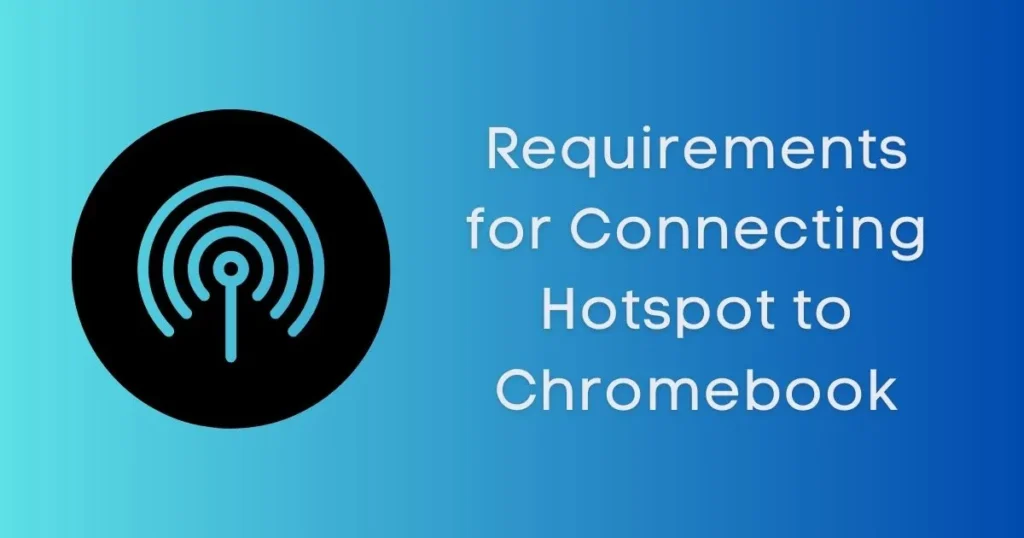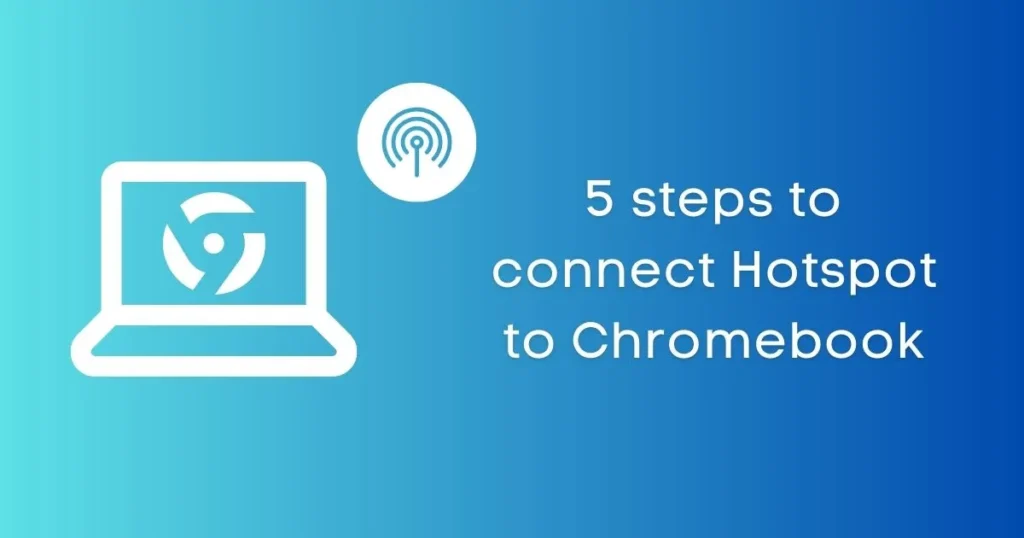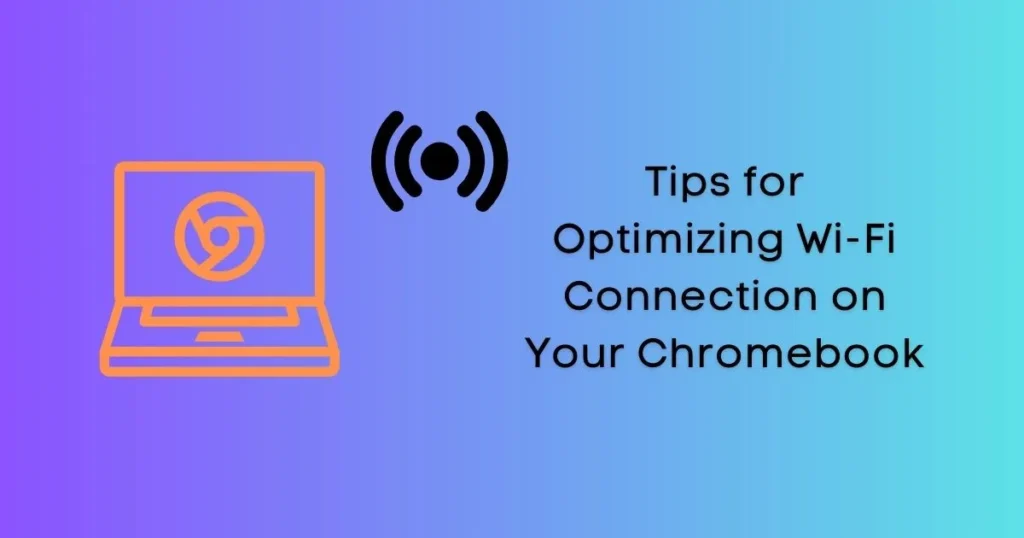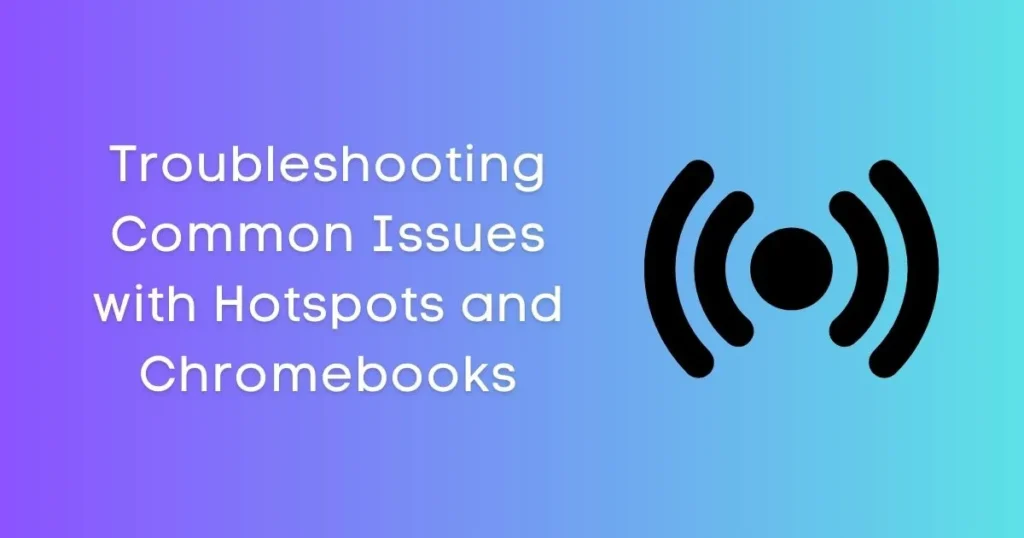We all know how inconvenient it can be when your Chromebook keeps disconnecting from WiFi. You’re in the middle of something important, and you get kicked off the internet, leaving you stranded without access to emails or web pages.
Fortunately, there is an easy solution – connecting a mobile hotspot to your Chromebook. Connecting your Chromebook to a mobile hotspot is an easy process that can be done in just a few steps.
In this article, we will explain how to connect hotspot to Chromebook devices, and also look at some tips to help ensure a reliable connection.
What is Hotspot and its Benefits?
A hotspot is a device that provides access to the internet via Wi-Fi. It is used as an alternative to traditional broadband connections such as DSL or cable.
Hotspots are convenient and provide greater flexibility than other methods of connection since they don’t require any installation or wiring.

Additionally, they don’t have any associated costs and can be set up quickly, making them ideal for people who are on the go.
Hotspots are also great for businesses as they allow multiple users to connect their devices to the same Wi-Fi network.
This is especially useful in places such as cafes and hotels where customers need a reliable internet connection but don’t have access to traditional broadband services. Hotspots provide a more cost-effective solution than installing a dedicated broadband connection.
Another benefit of using hotspots is that they are easy to use. All you need to do is turn on the device and it will automatically detect any available Wi-Fi networks.
Additionally, many Hotspot devices come with advanced features such as password protection, parental controls and even support for guest networks, making them ideal for both home and business use.
Requirements for Connecting Hotspot to Chromebook
Before you can connect your Chromebook to a hotspot, you’ll need to make sure that the device is compatible with the network.
Most modern hotspots support 802.11ac Wi-Fi standards, so any Chromebook that has been manufactured within the last few years should be able to connect.

It’s also important to make sure that you have the correct settings enabled on your Chromebook before attempting to connect. This includes enabling Wi-Fi, if it’s not already enabled, and making sure that the device is set up to use DHCP (Dynamic Host Configuration Protocol).
Once you’ve ensured that your Chromebook is set up properly, you can move onto the next step: connecting it to a hotspot. Depending on the type of Hotspot device you’re using, this process can vary slightly.
Generally speaking, however, all that is required is selecting the network from the list of available networks and entering in your authentication information (such as a password or username).
Once you’ve done that, your Chromebook should be connected to the hotspot and you can begin using it to access the internet.
How to connect Hotspot to Chromebook? : 5 steps
Connecting a Chromebook to a Hotspot is relatively easy and straightforward. The exact steps may vary depending on the type of Hotspot device you’re using, but generally speaking, the following steps should get you up and running in no time.

Step 1:
Ensure that your Chromebook is compatible with the Hotspot you are connecting to. As discussed above, most modern Hotspot devices use 802.11ac Wi-Fi standards and any Chromebook manufactured within the last few years should be able to connect.
Step 2:
Make sure that your Chromebook is set up for DHCP (Dynamic Host Configuration Protocol). You can do this by heading to the Network settings menu, selecting DHCP and then enabling it.
Step 3:
Select the Hotspot network from the list of available networks. This should be clearly labelled with the name of your Hotspot device.
Step 4:
If prompted, enter in your authentication details (such as a username or password). These can usually be found on the device itself or in the accompanying packaging.
Step 5:
Once you’ve successfully connected to your Hotspot, you should be able to access the internet from your Chromebook and begin using it as normal.
Tips for Optimizing Wi-Fi Connection on Your Chromebook
Once you have successfully connected your Chromebook to a Hotspot, there are a few steps you can take to ensure that your connection is optimized for the best possible performance.
Here are some tips for optimizing your Wi-Fi connection on your Chromebook:

1. Place your hotspot in an area with the best reception: It’s important to ensure that your Hotspot device is located in an area with good signal coverage. If you’re having difficulty connecting, try moving it around until you find a spot where you get the strongest connection.
2. Choose the right channel: Many Hotspots operate on multiple channels, and some may be faster than others. To ensure that you get the best possible connection, make sure to select the fastest channel available.
3. Update your Chromebook: Keeping your Chromebook up-to-date is important for ensuring that it runs at its optimum performance level. Ensure that all of its software and drivers are up-to-date by visiting the Settings menu and clicking on “About Chrome OS” to check for updates.
4. Limit the number of devices connected: When multiple devices are connected to the same Hotspot, their connections can be slowed down significantly. Try to limit the number of devices connected to your Hotspot at any one time in order to ensure optimal performance.
5. Check your Wi-Fi adapter: If your Chromebook’s Wi-Fi adapter is too slow or outdated, you may experience poor signal strength and slower speeds. Try upgrading the adapter to a newer model if necessary.
By following these tips, you can ensure that your Hotspot connection on your Chromebook is optimized for the best possible performance. With this in mind, you can enjoy a faster and more reliable connection when using your device on-the-go.
Troubleshooting Common Issues with Hotspots and Chromebooks
Despite their convenience and ease of use, Hotspots can sometimes experience technical issues.
Fortunately, most of these problems are relatively easy to solve and don’t require a great deal of technical knowledge.

Here are some of the most common issues that you may encounter when connecting your Chromebook to a Hotspot, as well as how to fix them:
1. Hotspot not showing up:
If you are having trouble connecting to your Hotspot, first make sure that it is turned on and enabled. Additionally, check the list of available networks to make sure that your device is listed.
2. Unable to connect:
If you are experiencing difficulty connecting to your Hotspot, check its network settings and ensure that DHCP is enabled. Additionally, try changing the channel of your Hotspot to see if that helps.
3. Poor signal strength:
If you’re getting a poor connection, try moving your Hotspot device to an area with better signal coverage. Additionally, make sure that none of the surrounding devices are interfering with your network’s signal.
4. Slow speeds:
If you’re experiencing slower-than-usual speeds while connected to your Hotspot, try limiting the number of devices that are connected at any one time. Additionally, check to make sure that your Wi-Fi adapter is up-to-date and functioning properly.
By following these troubleshooting tips, you should be able to quickly identify and fix any issues you may be having when connecting your Chromebook to a Hotspot.
With this in mind, you can enjoy a reliable and fast connection no matter where you are.
Conclusion
In conclusion, connecting a Chromebook to a Hotspot is relatively easy and straightforward. By following the steps outlined in this article, you can quickly and easily connect your device to a reliable Wi-Fi network.
Additionally, there are some tips that you can follow to optimize your connection for the best possible speeds and signal strength.
Finally, if you do encounter any technical issues, there are a few troubleshooting tips that you can follow to quickly resolve them. With this in mind, you can enjoy a fast and reliable Hotspot connection on your Chromebook anytime and anywhere.
Overall, connecting a Hotspot to your Chromebook is quick and easy and with the right knowledge you can ensure that your device has an optimized connection at all times.
With this in mind, you can enjoy a reliable and fast connection no matter where you are. Thanks for reading!
Frequently Asked Questions
Why won’t my Chromebook connect to my mobile hotspot?
If your Chromebook won’t connect to your mobile hotspot, first check to make sure that it is turned on and enabled.
Can I connect my Chromebook to my iPhone?
Yes, it is possible to connect your Chromebook to your iPhone. Simply turn on the Personal Hotspot feature on your device and then follow the steps outlined in this article to connect. After that you can start transferring your desired files from your Chromebook o iPhone.
What is the maximum number of devices I can connect to my Hotspot?
The maximum number of devices that you can connect to a Hotspot depends on the Hotspot device itself. Most models will support up to 8 simultaneous connections, but it’s best to consult your specific model’s documentation for more information.
How do I improve my Wi-Fi signal on my Chromebook?
To improve your Wi-Fi signal on your Chromebook, first check that you’re using the right channel on your Hotspot.
Additionally, try moving the Hotspot around to find a spot with stronger signal coverage.
Lastly, make sure that your Chromebook’s Wi-Fi adapter is up-to-date and functioning properly.
What should I do if my Hotspot connection is slow?
If your Hotspot connection is slow, try limiting the number of devices connected at any one time.
Additionally, check your network settings and ensure that DHCP is enabled.
Lastly, consider upgrading your Wi-Fi adapter to a newer model if necessary.
Can I airdrop to my Chromebook?
No, it is not currently possible to airdrop to your Chromebook. However, you can connect your device to your iPhone’s Hotspot and use the file transfer feature that way.
Can I use my Chromebook as a hotspot?
No, it is not currently possible to use your Chromebook as a Hotspot. However, you can connect the device to an existing Hotspot in order to access the internet.





